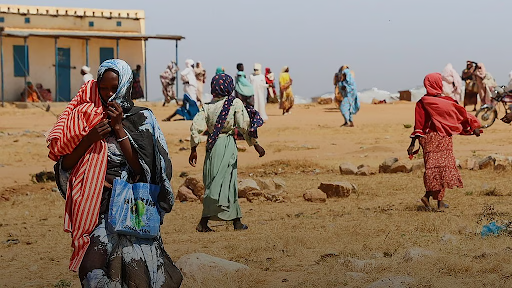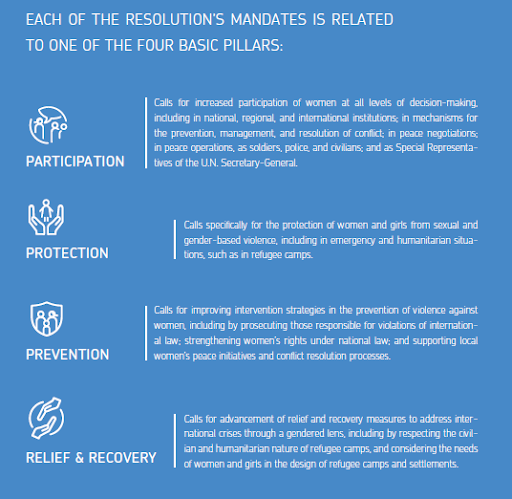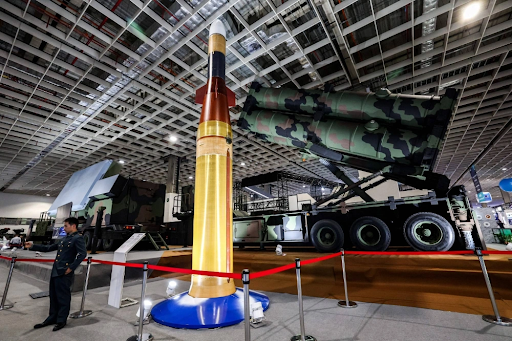



The 2025 UN report on Women, Peace, and Security shows conflicts at their highest since 1946, with soaring female casualties and exclusions from peace talks. It condemns rising military spending and urges urgent action to protect and empower women in peacebuilding efforts.

Copyright infringement not intended
Picture Courtesy: DOWNTOEARTH
The 2025 UN Secretary-General’s Report on Women, Peace and Security (WPS) reveals that gender equality progress is rapidly vanishing.
It is a global framework rooted in the UN Security Council Resolution 1325 (UNSCR 1325), which was unanimously adopted in 2000, to recognise the disproportionate impact of armed conflict on women and girls.
The WPS agenda is built upon four interconnected pillars:

Risk Exposure: 676 million women now live within 50 kilometers of a deadly conflict, the highest figure since the 1990s.
Surge in Casualties: Civilian casualties among women and children have quadrupled in the last two years.
Explosion of Sexual Violence: Conflict-related sexual violence has surged by 87%, used as a weapon of war.
Mass Displacement: By the end of 2024, over 123 million people were forcibly displaced, with women and girls facing heightened risks of violence and exploitation. (Source: UN Refugee Agency)
Weaponized Hunger: In 2024, over 295 million people in 53 countries faced acute hunger, with millions of pregnant and breastfeeding women in crisis zones malnourished. (Source: UNICEF)
In 2024, nine out of ten peace processes had no women negotiators, and women constituted only 7% of negotiators and 14% of mediators globally.
Lack of Political Will: Peace and security decisions are male-dominated, with no accountability for excluding women.
The "Dangerous Imbalance" in Funding: In 2024, global military spending exceeded $2.7 trillion, while women's conflict organizations received only 0.4% of aid. (Source: UN)
Shrinking Civic Space: Women human rights defenders and peacebuilders face growing threats, harassment, and work restrictions.
Militarization over Diplomacy: Prioritizing military solutions over diplomacy exacerbates global conflicts and endangers civilians.
Emerging Threats: Climate change multiplies conflict; digital violence and misinformation threaten women's safety and participation.
Strengthen Accountability
Member states must strengthen WPS accountability, ensuring justice and reparations for survivors of conflict-related sexual violence.
Increase Financing for WPS
Increase funding for women-led and women's rights organizations in conflict and crisis settings. The UN's Gender Equality Acceleration Plan targets 15% of UN spending for gender equality by 2026.
Mandate Meaningful Participation
Set binding targets and quotas for women's full, equal, and meaningful participation in all peace and security decision-making, including negotiations, mediation, and post-conflict governance.
Invest in Prevention
Prioritize conflict prevention efforts that address root causes, integrate gender analysis, and support local women's peace initiatives.
Gender Data Revolution
Invest in disaggregated data collection to make women's realities in conflict zones visible and to inform evidence-based policies and accountability.
Address Emerging Threats
Integrate gender perspectives into responses to climate change, digital violence, and arms control to ensure inclusive and effective strategies.
The 2025 UN report calls for a shift from war to inclusive, sustainable peace. Member states, including India, must empower women by ensuring equal participation in peace processes, directly funding women's organizations, and increasing accountability for crimes against women and girls.
Source: DOWNTOEARTH
|
PRACTICE QUESTION Q. Resolution 1325 is the first UN Security Council resolution to specifically address the impact of armed conflict on: A. Refugees B. Displaced populations C. Women and girls D. Civilian infrastructure Answer: C Explanation: UN Security Council Resolution 1325 (UNSCR 1325) was the first resolution to formally recognize that armed conflict has a unique and disproportionate impact on women and girls. The resolution calls on all parties to conflict to take specific measures to protect women and girls from gender-based violence, such as rape and other forms of sexual abuse. |
The report shows that global conflicts have reached their highest level since 1946, exposing millions of women and girls to unprecedented violence and exclusion from peace processes.
According to the report, around 676 million women now live within 50 kilometres of active conflicts—the highest figure since the 1990s.
Adopted in 2000, UN Security Council Resolution 1325 calls for women’s full participation, protection, and involvement in peace and security efforts. The 2025 report marks its 25th anniversary but warns that progress is reversing.





© 2025 iasgyan. All right reserved